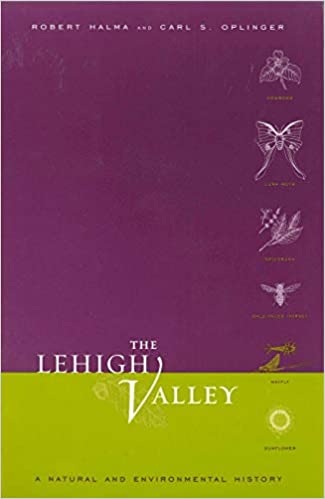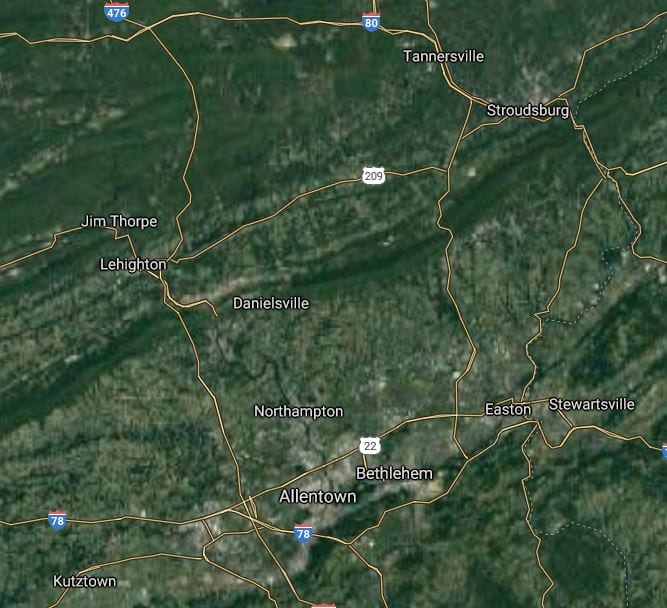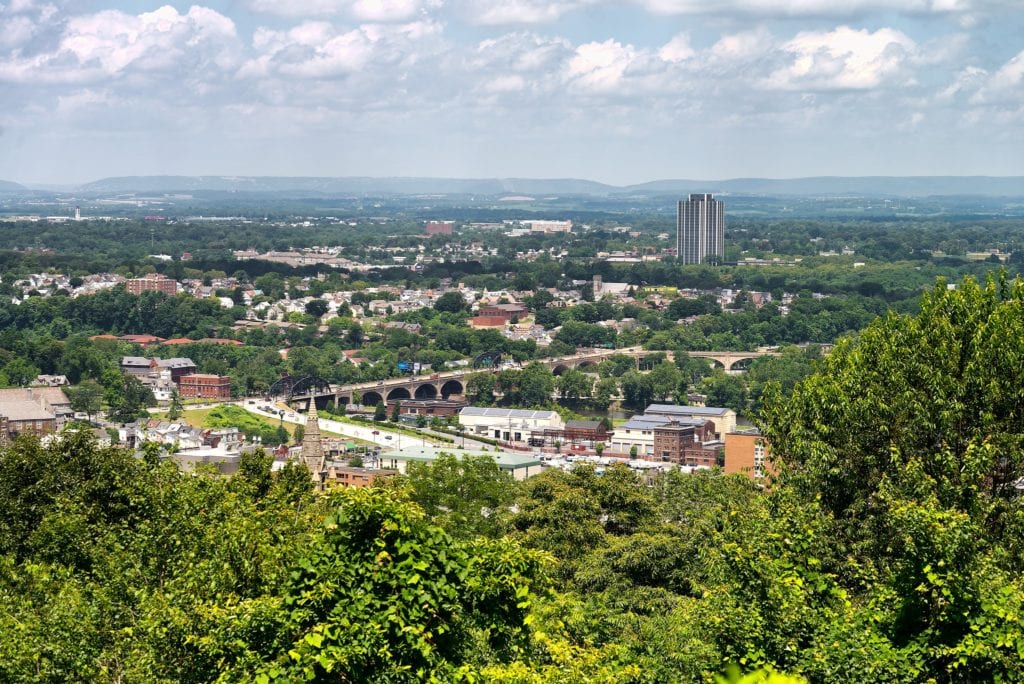 When I think of the Lehigh Valley, I might think of MusikFest, the D&L Trail, driving on Route 22, Coca-Cola Park, or the Lehigh and Delaware rivers. However, with the exception of the rivers, these features are specific not only to our region but to our region in this particular time – within the past several decades. The Lehigh Valley: A Natural and Environmental History by Robert Halma and Carl S. Oplinger provides an account of more long-standing features that define the Lehigh Valley, as well as the changes it has experienced over time.
When I think of the Lehigh Valley, I might think of MusikFest, the D&L Trail, driving on Route 22, Coca-Cola Park, or the Lehigh and Delaware rivers. However, with the exception of the rivers, these features are specific not only to our region but to our region in this particular time – within the past several decades. The Lehigh Valley: A Natural and Environmental History by Robert Halma and Carl S. Oplinger provides an account of more long-standing features that define the Lehigh Valley, as well as the changes it has experienced over time.
For anyone interested in connecting features of the Lehigh Valley today to the shifting of continental plates billions of years ago and the settlement patterns of early colonists, this is a fascinating read that concisely covers many aspects of the area’s history. For example, the southern portion of the region contains large amounts of limestone because of moving water that carried eroded carbonate particles to a shallow warm ocean that covered eastern North America billions of years ago. That limestone now makes parts of the region vulnerable to sinkholes and home to some extensive cave systems, and can also contribute to hard water, which is why many in the Lehigh Valley invest in water softener systems.

Satellite view of the Lehigh Valley, with the State Game Lands along Blue Mountain to the north, the cities of Allentown, Bethlehem, and Easton in the south, and the Delaware River to the east. Image from Google Maps.
On a slightly more recent time scale, the book chronicles changes in the region’s vegetation. Transitioning from a climate similar to the Arctic tundra, the region would have seen lakes, bogs, and streams resulting from melting glaciers, and then prairie habitat around 10,000 years ago. Forests started to overtake the prairie 4,000-5,000 years ago, creating a landscape more like what we are familiar with, and providing homes for the types of plants and animals common today. Prior to European colonization, most of Pennsylvania was Eastern Deciduous Forest, with the exception of some barren rocky ridges, open floodplains or wetlands, and minimal burned areas or agricultural land cleared by Native Americans. In the Lehigh Valley, up until about 100 years ago, oak-chestnut forest covered most of the land. Clearing trees for development and agriculture, as well as a devastating blight from an accidentally introduced fungus that killed nearly all American chestnuts, reduced the spread and changed the composition of our forest.
In its place emerged a fragmented forest and large swaths of farmland. Even in the 1950 census, with cities and suburbs growing in size, 81% of Northampton County’s acreage and 87% of Lehigh County was taken up by farms. The Lehigh Valley’s favorable climate and fertile soils as well as Pennsylvania Germans’ strong agricultural roots contributed to this phenomenon, which in turn changed the area’s environment, draining soil of its nutrients, polluting streams, and reducing biodiversity. However, the Lehigh Valley Planning Commission reports that agricultural land now accounts for just 22% of the Lehigh Valley’s land area. Much of the lost farmland has been developed, bringing further environmental challenges. It’s hard to imagine how much we have changed the landscape, from the 98% forested state William Penn saw in 1698 to the increasingly agricultural landscape that persisted into the 1900s to the highly developed world we live in today. And yet despite this transformation, The Lehigh Valley: A Natural and Environmental History reminds us how connected we are to the powerful non-human forces that have and continue to shape the place we call home. We are susceptible to sinkholes because of the erosive action of prehistoric rivers creating a bed of limestone, the types of trees we might see on a hike are a result of long-term temperature and precipitation patterns (now changing due to human-caused climate change), and our cities are laid out the way they are in part because of the presence of rivers and streams through the region.
The book also touches on the human history that gave rise to many environmental changes in the Lehigh Valley, but it’s important to note that this book is far from comprehensive, and like many historical accounts centers the perspectives of white men, from European colonists to powerful businessmen during the Industrial Revolution. Throughout, the book includes “cameos” which are brief biographies of individuals who played important roles in the Lehigh Valley’s history. Notably, these cameos feature those who had access to political and financial power to shape the institution and structures of the Lehigh Valley, all, with the exception of one woman, white men. One cameo features General Harry Clay Trexler (1854-1933) who founded Pennsylvania Power and Light (PPL), aided in planning Allentown, and left large amounts of land to public use upon his death, including 1,108 acres that are now the Trexler Nature Preserve. Another describes the role of Hugh Moore (1887-1972), for whom Hugh Moore Park in Easton is named and who invented the Dixie Cup. Moore’s cameo recognizes his environmental contributions to the region and his noted advocacy for international peace and population control, but stops short of addressing the ties at that time between the issue of population control and eugenic beliefs about which populations were suitable for reproduction. Readers interested in a more comprehensive and complete portrait of the people of the Lehigh Valley, including key people involved in environmental issues, could supplement their reading with sources such as the Black Bethlehem Project or the Steelworkers Archives.

View of Bethlehem and South Mountain. Photo by Bill Dickinson on Flickr, licensed through Creative Commons.
Overall, the descriptions of local natural history in this book are fascinating, and the authors also include lists of noteworthy sites to visit to see geological formations, bird migrations and other wildlife, different types of forest/vegetation, and water/wetland ecosystems. Exploring these sites would add a tangible element to understand the journey the region has taken, from being shaped by mainly natural forces to mainly human ones. It also prompts questions about how we are contributing to that story now, that people may look back on in 100 or 1000 years. What of the Lehigh Valley, its natural and man-made features, do we want to carry forward and preserve? What should we or must we change? Halma and Oplinger present some of their own thoughts in the final chapter of the book, but I leave it as an open question. After reflecting on where the Lehigh Valley comes from, where do we want it to go?
